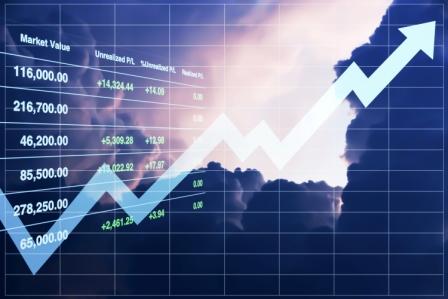Amidst the Covid-19 crisis, which has brought about pain, suffering, death, and severe economic hardships, stock markets are remarkably stable globally. The MSCI AC World Index which tracks 3000 stocks from 49 countries – both developed and developing – has been surprisingly stable during the last six months. There has been no single instance of a 5 percent correction in the index since November 2020. How do we explain this remarkable market stability during a major global crisis?
Let us get the issue in perspective. When the pandemic Covid-19 broke out in 2020, markets crashed globally. That was a rational reaction to an unknown health crisis and the severe recession triggered by the lockdowns. But what followed was an unprecedented fiscal and monetary stimulus, which flooded the global financial system with humungous liquidity. A part of this huge liquidity went into stocks, lifting stock markets. An important factor that facilitated this market rally was the so-called ‘Robin Hood phenomenon’ – retail investors directly investing in stocks through modern highly efficient technology platforms. The fundamental factor aiding the market rally has been the excellent performance of segments of the corporate sector undisturbed by the pandemic. Some segments like pharmaceuticals and e-commerce even benefitted from the pandemic. The discovery of vaccines came as a shot in the arm for markets, providing clarity on the end game in this crisis. Markets started discounting the scenario of vaccines winning the war against the pandemic. The rally started gaining momentum and most markets reached record high levels. Unprecedented liquidity infusion ensured historically low interest rates. In the absence of alternate investment avenues, money continued to flow into equities imparting resilience to markets.
An important feature of this global market rally is that even the second wave of the pandemic didn’t impact the markets. When the US and Europe went through the second wave, markets continued to rally unruffled by the negative news. Low interest rates, absence of alternate investment avenues and the hope of economic recovery in 2021 contributed to this market resilience even during the second wave. This story is playing out during the ongoing second wave in India.
It is important to appreciate the fact that this bull run is global. Globally markets are highly correlated. It is only logical to assume that major market corrections, too, will be global. We know from experience that market crashes are, more often than not, caused by unknown factors. There are ‘unknown unknowns’, the so called ‘black swans’, like the present pandemic or the collapse of the housing bubble in 2008. There are ‘known unknowns’, like the Fed’s monetary policy and sudden shifts in bond yields. We know that the Fed will rebalance its balance sheet and start raising the interest rates. But we don’t know when this will happen. That’s why it is a known unknown.
There is a high probability of a sharp market correction when the Fed announces tapering of its bond-buying program or when the US 10-year bond yield spikes above 2 percent on fears of inflation. Investors should be prepared for that. Meanwhile, enjoy the ride and remain invested in quality stocks; but slowly start booking partial profits and invest the proceeds in fixed income.









